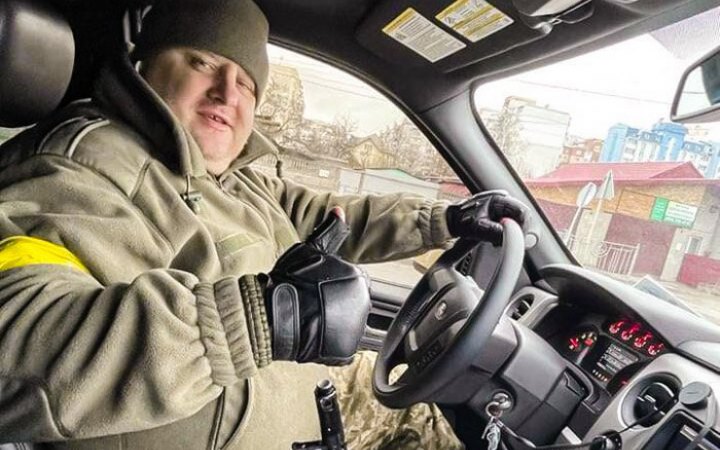Now Kyiv is fortified, it has several lines of defense
From the first days of the war, Kyiv was a priority for the enemy. However, the russians expected to take the capital in three days and then walk along Khreshchatyk Street in a triumphant parade. They failed. What is the current situation in Kyiv (the interview was taken on 28 March, before the liberation of the Kyiv region from the russian occupiers – S.K.)?
If you take the capital itself – the situation is calm. There are no active hostilities near the city’s borders. It is quiet, apart from missile attacks, quite frequent this week. There are the dead. Our air defense system works very well, but still, some “missiles do strike” from time to time.
In general, the critical infrastructure in the city works, even part of the subway, where it’s possible. There are no significant complications with critical infrastructure.
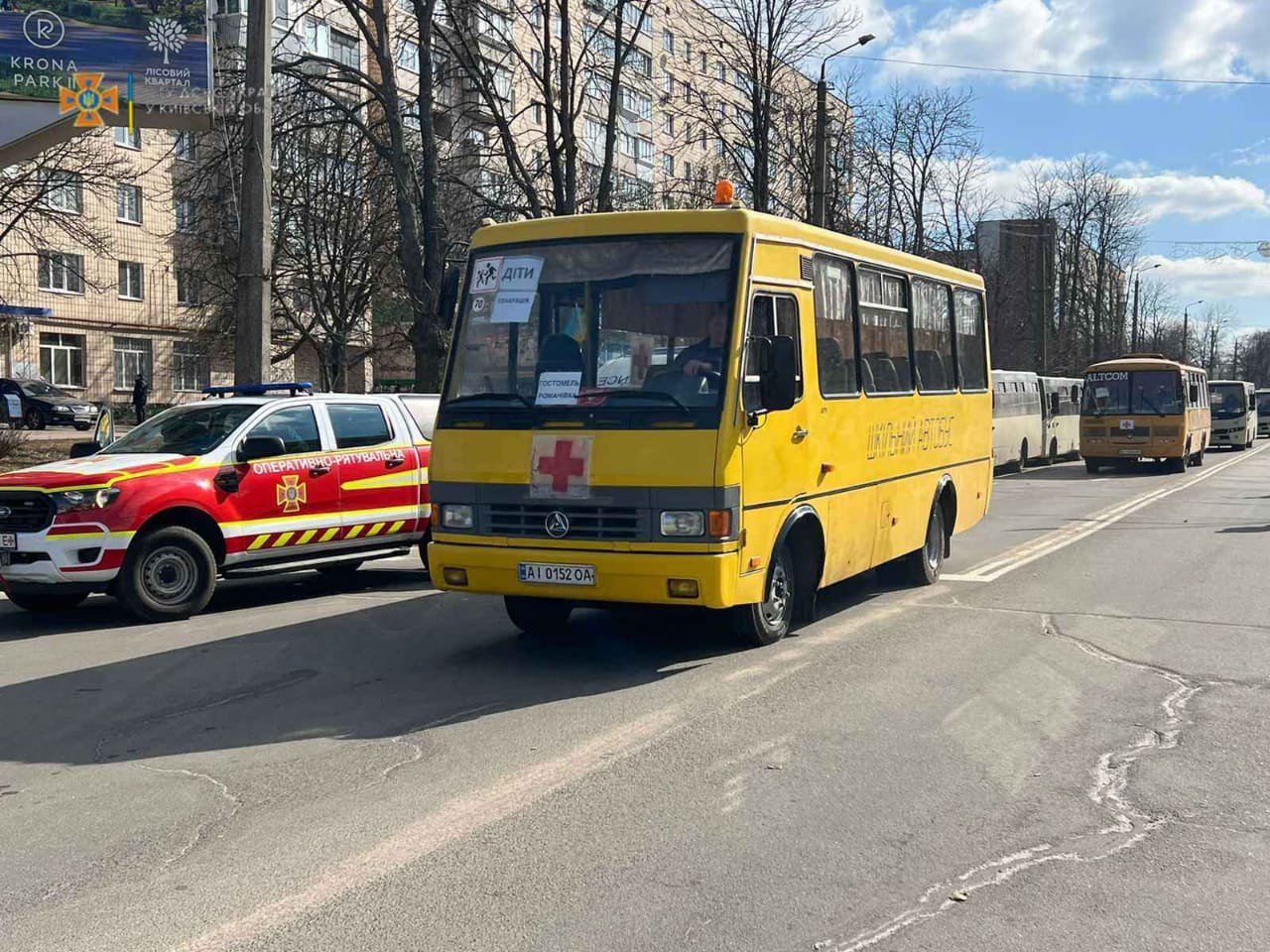
How do you think things will develop further? Because the attention of the whole world is focused on Kyiv, in any case.
I am not a military leader, I do not have any insider information about the intentions of the enemy, the concentration of troops or their movement. But I think they proved to be a complete failure in the first days when they had tried, as you said, to take Kyiv by assault, and for some reason they had decided they would raise their flags here on the third or fourth day after the attack. This could not have happened.
Now Kyiv is fortified and has several lines of defense. The city authorities provided the military with all necessary aid: material and technical things, fortifications, equipment, concrete blocks, metal hedgehogs, etc. They got everything they needed to build fortifications or trenches, anti-tank trenches, etc. Now, in my opinion, it is impossible to take Kyiv without any extra effort. And the enemy does not have any: neither time, nor effort.
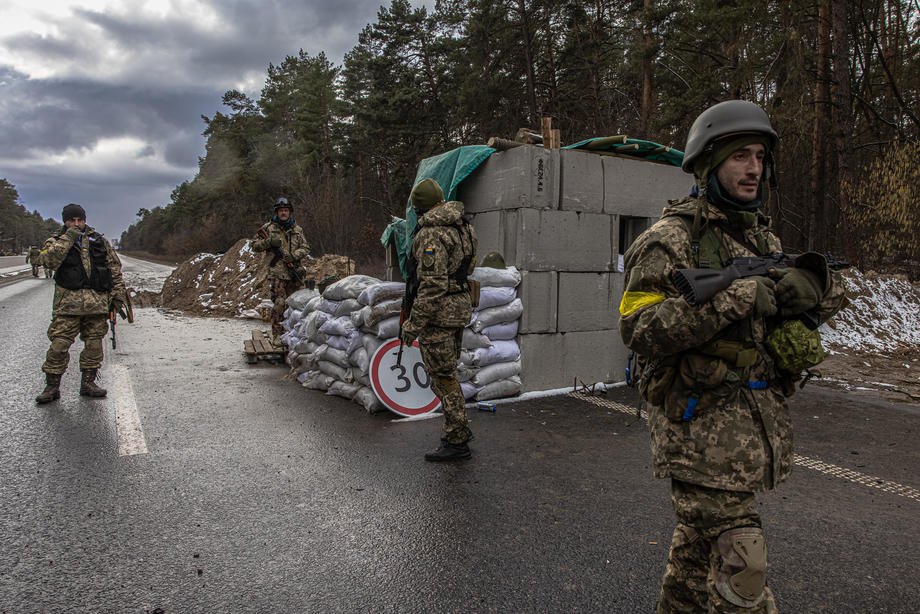
In a recent interview, you said that you did not rule out an increase in bombing of the city, because the russians do not care about their targets: whether these are residential areas or strategic facilities. We see this in Kharkiv, which I have already referred to, and other cities as well.
There are many such examples, not only Kharkiv. We see that there is no difference for them. I do not think that Kyiv is safe from such schizophrenic attacks. One can call them fascist attacks. Kharkiv, Mariupol, Sumy, Izyum…
Chernihiv…
Chernihiv, yes. Missile strikes are carried out deep into the rear, as they say, “at military facilities”, but peaceful civilians and civilian buildings suffer. And Kyiv is not impervious to it.

“A lot of work has been done to secure the water supply and to prevent its absence in the city”
What conclusions did Kyiv draw out of the examples of other cities you mentioned? Vadym Boychenko, the mayor of Mariupol, noted that cities should prepare more carefully for possible living under siege. Is there sufficient strategic stocks of products and medicines in Kyiv, how long will they last, if necessary?
I'm not sure I can reveal any details.
As much as admissible
I will explain the situation as much as I can. Of course, we have made adequate conclusions. Unfortunately, Mariupol had less time to prepare. It was actually surrounded after the first week. In addition, Mariupol is located near the demarcation line with the DPR / LPR. Kyiv is a little bit of a different story. At first, all the forces were directed to build a very serious line of defense, which was kept by the Armed Forces. As I said, there were several defense lines. Now we improve them, make them stronger. That is why the city has switched to creating strategic reserves, including food, fuel and lubricants, and scatter them in several places, given the possibility of missile strikes on oil depots. As we saw in Lviv.
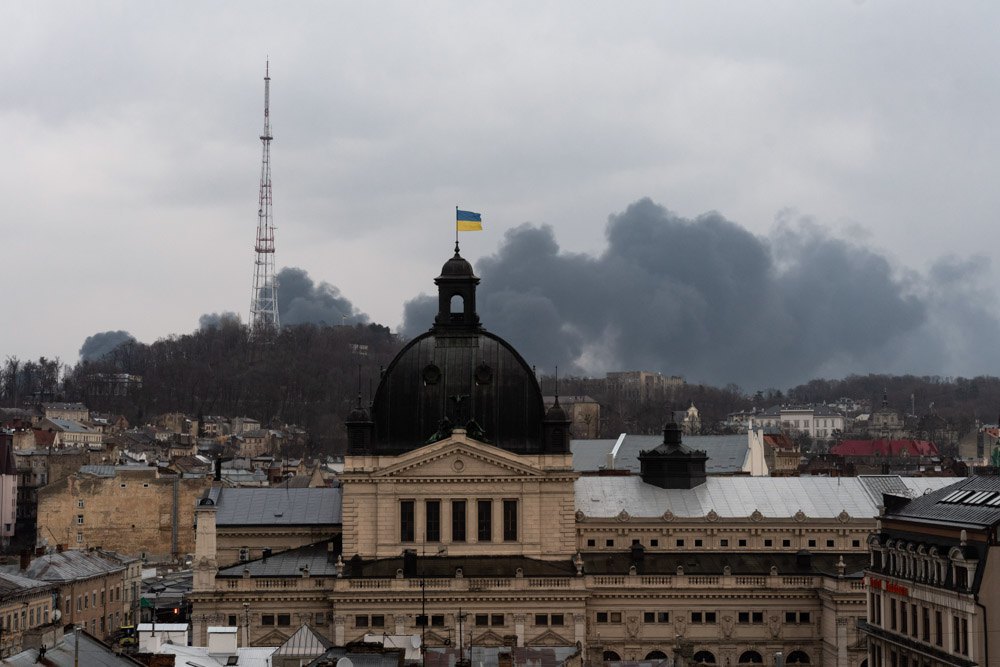
And in the Rivne region.
Yes. A lot of work has been done to secure the water supply and to prevent its absence in the city. For example, we found additional sources, installed power generators there, provided them with fuel and lubricant supplies, so that the pumps still operate in case there is power outage. So, we drew out proper conclusions. The city gets comprehensive aid, and the city accumulates long-term food and water supplies as part of a state program.
What about the work of public utilities? They are actually also on the front line today.
When there was any damage, emergency crews of the public utilities sector restored everything. By the way, even before the beginning of hostilities the city formed materials reserves, there were people and equipment available to promptly eliminate damage. Fortunately, the damage has not yet been extensive. The city is doing well. When large power grids were damaged, DTEK’s repair crews (DTEK is a Ukrainian energy industry company. – translator’s note) and the municipal emergency maintenance crews repaired everything fairly quickly, within hours.
“A contract with the voluntary formation of a territorial community does not exempt a person from conscription. If someone wants to avoid military induction in this way, it's not going to work.”
I want to talk a little about the creation of volunteer formations in the city, which, unlike the territorial defense forces, are not military structures. According to the Law on National Resistance, you are directly involved in the creation of these detachments. Their deployment at the third stage of resistance is your scope of responsibility. How do they work now?
The mayor of Kyiv Vitaliy Klitschko, by the way, recently held a large-scale meeting with the head of the military-civil administration Mykola Zhyrnov, the Commander of Territorial Defense Forces, Brigadier General Yuriy Halushkin, with all foremen of volunteer formations of a territorial community – there are more than 40 of these formations in Kyiv.

I was really directly involved in organizing and coordinating the formation of these volunteer groups. I would like to point out that although the members of these formations are not servicemen of the Armed Forces of Ukraine, like those who joined the territorial defense brigades and since the war began there has been no dual statuses, they are coordinated and controlled directly by commanders of battalions and territorial defense brigades. These people are subject to the statutes of the Armed Forces and all rules of handling firearms. They rarely get assigned with the combat tasks, most of them work inside the city – at checkpoints, strengthen the protection of important critical infrastructure, logistics centers, city centers, etc. In fact, people spend their free time helping the army, law enforcement bodies, security, and defense forces to defend the city. And, of course, if there is another direct attack, they will all defend Kyiv.
How can one join this voluntary formation? It is more or less clear with the territorial defense. What about voluntary formation?
There are some problems with territorial defense units due to the queue for military enlistment offices. The army has already gathered a sufficient number of people, but it will take everyone who wants to defend the country. There are certain specialty occupations that are needed first and foremost.
The procedure for joining a volunteer formation is the same as for territorial defense battalions. A person comes to the head of the volunteer formation, signs a contract with this person. The Security Service of Ukraine and the Ministry of Internal Affairs check a volunteer. It is a necessary procedure before the issuance of weapons and because there are certain restrictions, such as convictions for serious crimes.
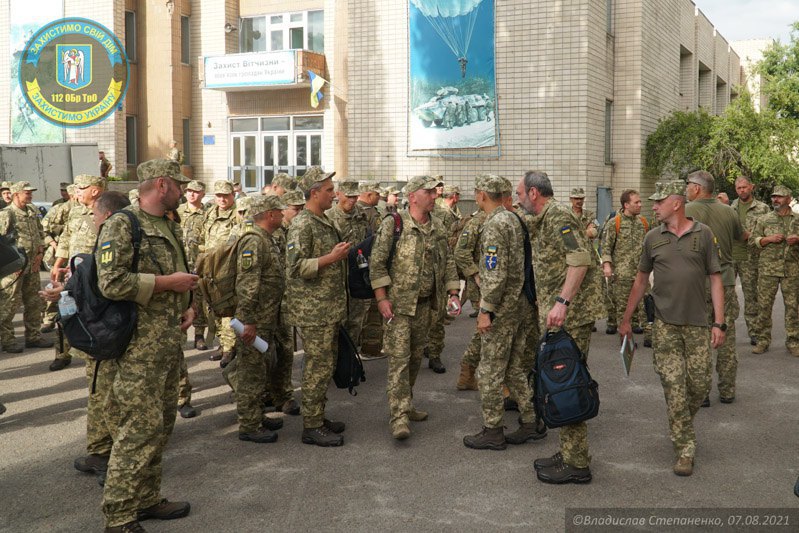
An important aspect: a contract with the voluntary formation of a territorial community does not exempt a person from conscription for military service under military induction or for military service in the Armed Forces. Moreover, all these lists and contracts are registered at the military enlistment office, so a person becomes a reservist of the Armed Forces. If someone wants to avoid military induction in this way, it's not going to work.
How long does it take to check those who want to join the volunteer formations? And how does it go in the current conditions?
It does not take much time. The procedure has been considerably simplified. There were meetings with the police, with the Security Service of Ukraine, when we formed many of such formations a couple of weeks ago. Representatives of the Security Service were present in the Kyiv City State Administration to check people faster. All procedures have been cut short as compared to peacetime, so there are no problems.
How many members were formed into the Territorial Defense Units before the war? And how many members are there now? With the beginning of hostilities, the people were very active, eager to join.
To keep the numbers confidential, I will say that the Territorial Defense Brigade has recruited more than the number provided by the staff list. People who enlisted in the territorial defense brigades take part in hostilities in some areas. The defense on the line of combat is staffed by personnel of the Armed Forces according to the staff list.

From what stocks are weapons given to Territorial Defense?
Territorial Defense is supplied with weapons. The Ministry of Defense provides weapons, ammunition, and other military assets. I can't tell you exactly where they bring it from, I did not ask about that. But everyone who serves has a weapon. There are some problems with other support, but everyone has these problems.
Do you mean protection - bulletproof vests, helmets?
Yes. Those who are not provided with the means of protection do not take part in military clashes.
According to the information available to me, tens of thousands of weapons were given to people in the first days in Kyiv. And there are some doubts about how to control this issue after the war.
We may need to think about this today, but we will resolve this issue after the war. The war is not over yet, and all these weapons are still needed. There are several options… Everyone who received a weapon signed for it. Maybe it's just my idea so far, we have not discussed it yet, we need to give some time to collect these weapons later. A month, two, half a year for those who received the weapons to bring it back.
It is possible that for those people who are enrolled in the territorial defense units or in the voluntary formations of the territorial community, who need weapons for their service, Swiss version of weapons storage will be introduced. They will have to keep it at home with registration, with full responsibility for its storage, carrying and use. But I don't think it matters now while the war is going on. We will figure out how to organize the situation, and how to remove the leftover stock. The police, law enforcement agencies and the state have enough experience and opportunities to manage the issue. Conscious people took those few thousand submachine guns. Rarely do they fall into the hands of criminals. I would not say that after 2014 there was any serious outbreak of crimes involving military weapons.

Why did I ask about the check? A criminal record check is good. But a person receives a weapon and stands at a checkpoint, and the security of civilians depends on this person’s sanity. It is clear that under the current conditions it is not a question of psychological examination, still…
We are not saying that the man received a weapon, ran, set up a checkpoint and is on duty there. All formations, including volunteer ones, have a clear structure: divisions, platoons, companies, battalions. There are leaders, sergeants who control people, assign them tasks. If a person does something wrong, he will be held accountable. If he or she goes on a business trip or goes on dismissal, the weapon is withdrawn. In general, there have been no problems so far. There are law enforcement agencies, military intelligence, leaders and commanders to control it.
Can volunteer formations be with their own weapons?
Yes. This is provided for by law, and by a resolution of the Cabinet of Ministers.
What kind of weapon are we talking about?
Any. There is a law signed by the Supreme Commander-in-Chief, the President of Ukraine, according to which a person can defend themselves during the national resistance and repel the aggressor with any weapon. Hunting rifle, carbine, automatic weapon issued by army.
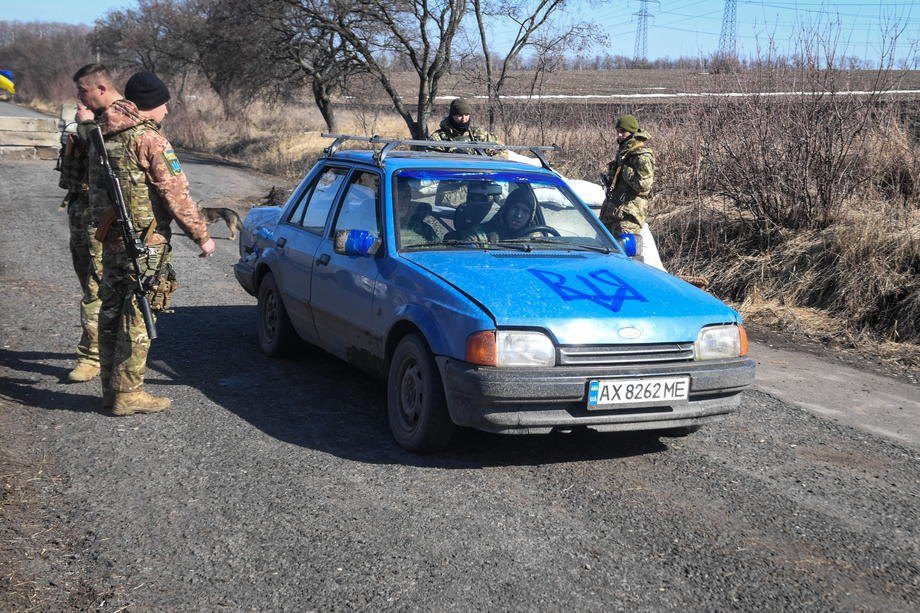
You may kill the russian invaders and you won’t be punished?
Yes. Kill them with a weapon, a pitchfork, or even with a Molotov cocktail. Whatever. As you wish.
Is it possible to buy weapons in Kyiv now? I suspect it is in short supply.
Yes, the demand is very high. Shops are limited only by their capability to deliver weapons in the required quantities. There are no legal prohibitions. There is even an order to speed up registration, especially for members of volunteer groups. Therefore, weapons can be bought in stores and people take them. But there is really a lack of supply. Everything has already been sold. It is difficult to buy good optics, a good rifle for snipers.
“I do not see any critical effect of the reconnaissance and sabotage groups’ activities”
In the first days of the war, the reconnaissance and sabotage groups (RSG) were active in Kyiv. Defense Minister Oleksiy Reznikov and the military warned about sabotage groups. What is the situation with RSG in the capital city now? One of the RSG’s tasks was the physical elimination of President Zelensky.
The russians sent its RSGs in Kyiv, but I would not say that they managed to damage critical infrastructure or cause great damage to the city’s logistics.
I cannot say anything about the preparation of attacks on high-ranking officials either, because I read about it only in the media. In general, I may state that the RSG failed to achieve any serious results in Kyiv, because of the developed system of checkpoints, thorough checks, use of passwords, passes, curfew, the time of which is changing. I know that military counterintelligence, police forces, and the Security Service of Ukraine are working on the issue (the RSG elimination – S.K.). Therefore, as a citizen and an official, I do not see any critical effects of RSGs’ activities.

But the very fact that they had managed to enter the city before the war, settled here and intensified at some point, was a little alarming.
This is a war. Preparing for war.
What is the situation with law and order in Kyiv? It is obvious that looters are becoming more active at this time.
There was no mass looting. Crime rate has dropped, as the Kyiv police chief said in an interview. Some types of crimes are almost never committed. I see in summaries about 1 to 2 facts of theft, which we call looting. But there are days when only some illegal weapons or drugs are confiscated from people. Although more and more people arrive in the city.
Are people coming back? Men?
I can't say men or women, but there are enough people in the city. Maybe people get used to everything, began to spend less time in bomb shelters, basements, move more around the city. The weather is more or less fine.
Currently, according to mobile operators’ data, about 1.8 million people stay in Kyiv.
Photo by: Max Trebukhov
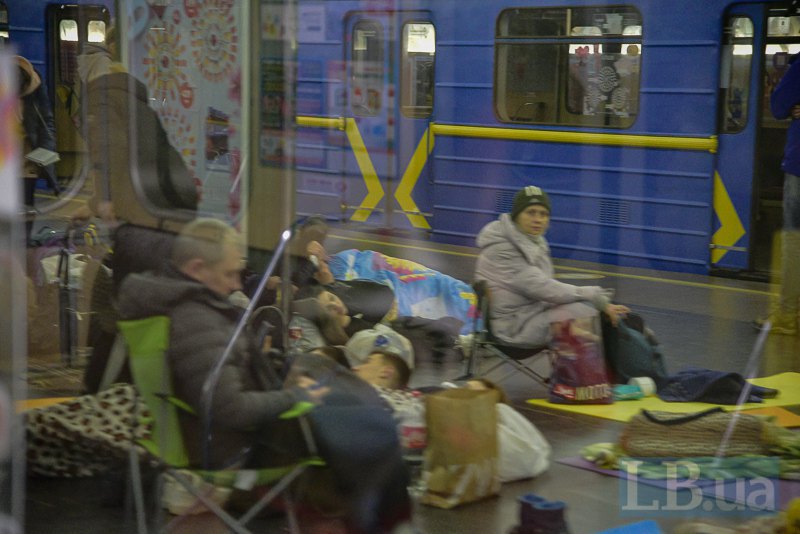
The Kyiv mayor referred to approximately the same figures. Every second person left the city. Is it really possible to say that thanks to the resistance of small satellite towns of Kyiv like Irpin, Bucha, Vorzel, and others it was possible to gain time to fortify the capital at a terrible price? In your opinion, when can we talk about restoring a normal life?
The military finishes their work, then the police will resume their work. Now we must clear up the mines in these locations, dispose of all ammunition, and clear the territory of corpses – enemies, civilians, animals. Unfortunately, this cannot be avoided. Because as the weather gets warmer, there will be an epidemic catastrophe.
Then people will start to return. The primary task of the state is to restore critical infrastructure - electricity, water supply, provision of medical services. I can say this from my own experience, as we did it in Slovyansk, where I was the head of the district state administration immediately after the liberation of the city in the summer of 2014. The state returns, the military forces come and continue maintaining protection. Then it is necessary to restore water and power supply, set up supply of food and water, medical care, provide people with places to live, assess the level of destruction of residential areas, and plan construction of new buildings. The latter stage is a distant prospect.

How long did it take to restore everything in Slovyansk? The return to normal life itself?
First, the infrastructure in Slovyansk was much less damaged, there were less hostility activities, they took place mostly in nearby settlements, small villages Mykolayivtsi, Semenivtsi. A strong State Emergency Service (SES) brigades had worked there, headed by Mykola Chechotkin, who later headed the SES of Ukraine for several years. They worked very professionally, the critical stage of infrastructure restoration lasted up to a month, three weeks. Three weeks later, all power grids were upgraded, water supply was restored, streets were cleared of debris, and destroyed houses were dismantled. And people began to return little by little to the town.
Restoration of hospitals and administrative service centers is also a priority, but it will, of course, take longer, given the extent of destruction.
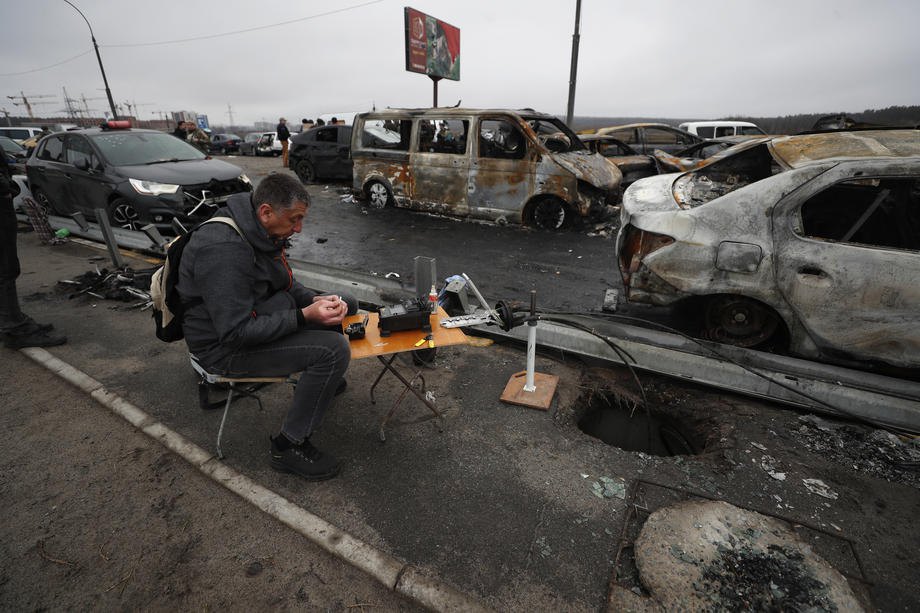
In 2014, you, as the then head of the Horlivka police, defended the department where the weapons that the russians intended to seize were stored. Is the situation in small towns similar now? Is it a different case?
Absolutely a different case. The pivotal difference is that in 2014, russia, a state hostile to us, stood behind the backs of civilians. Both in Donbass, and in the Crimea. They stood hiding behind the backs of women and children. Units of the armed forces were involved in part and with little intensity.
Now we have a full-fledged war, a full-fledged invasion of the armed forces of the russian federation, which by all possible means are destroying our cities and killing people. They use the full range of weapons: planes, missiles, ships. This is a fundamental difference as well as the scale of destruction and loss, of course.









